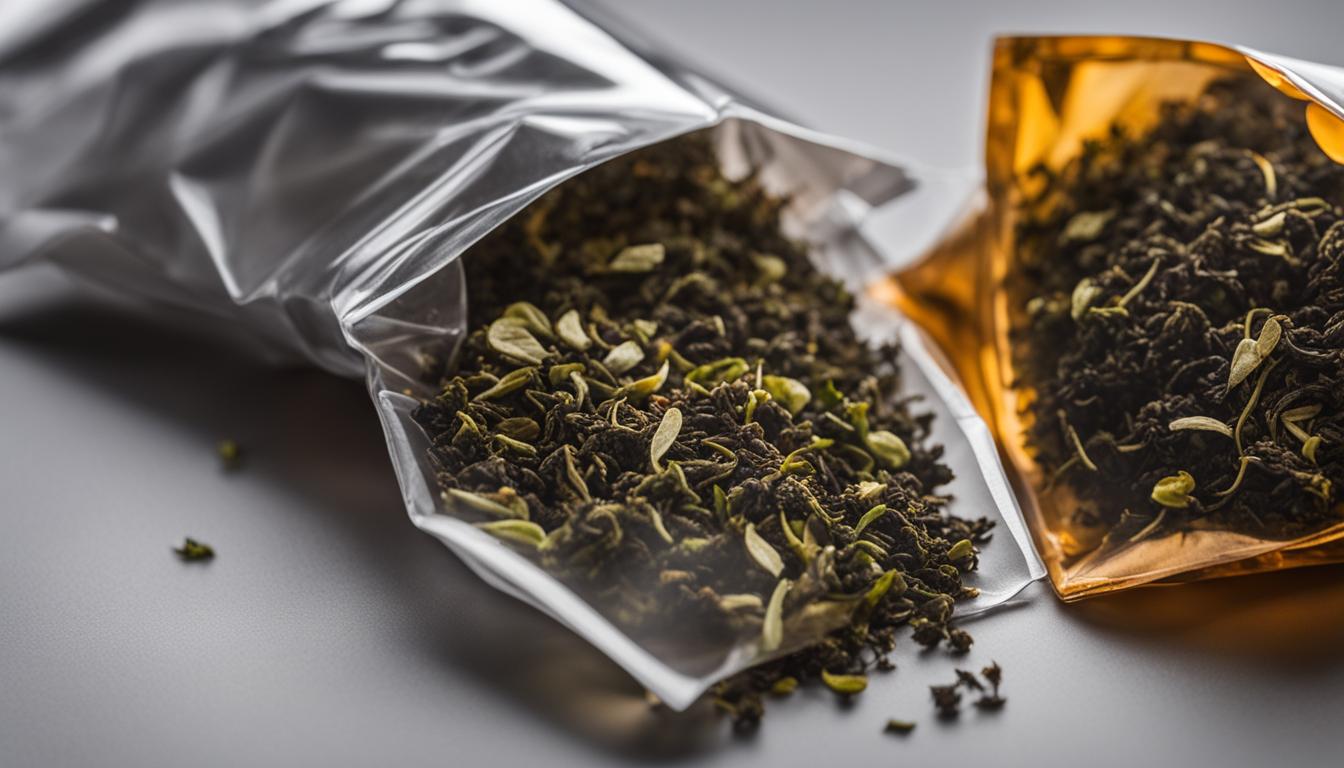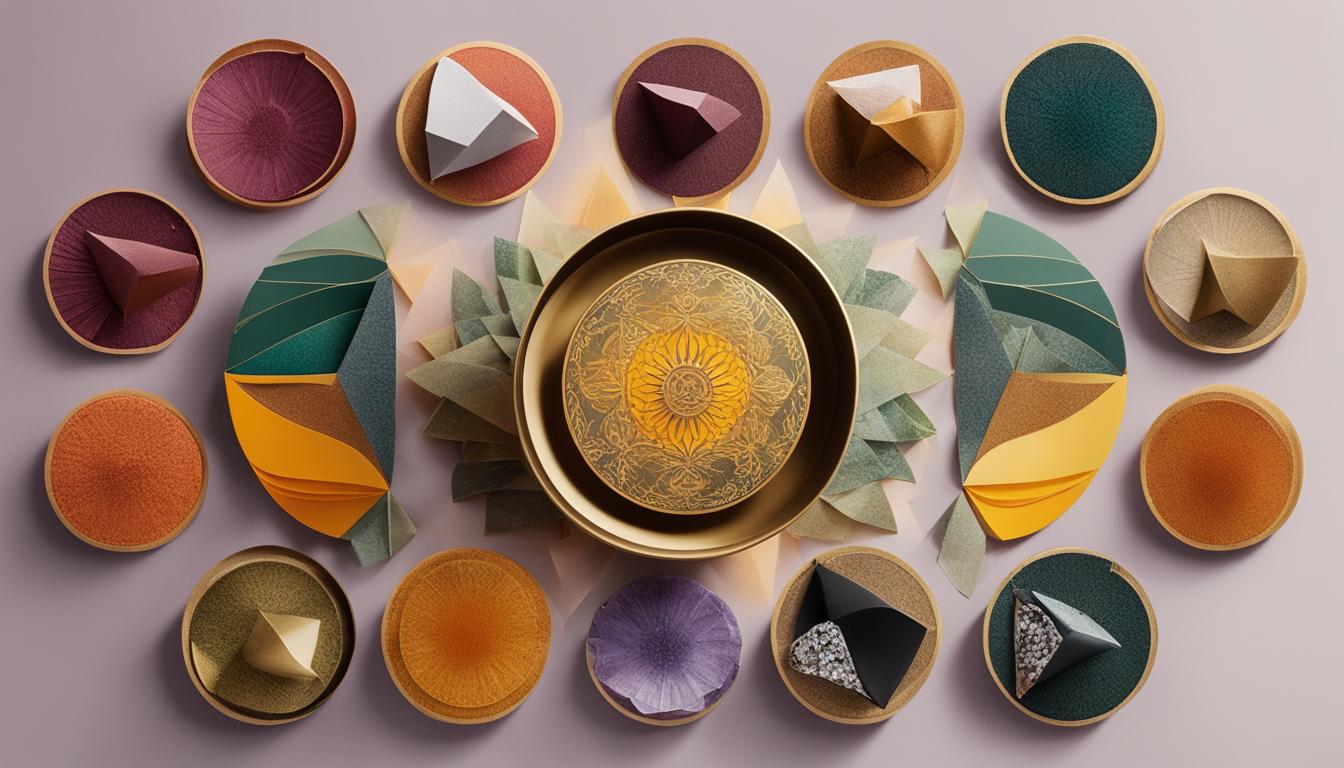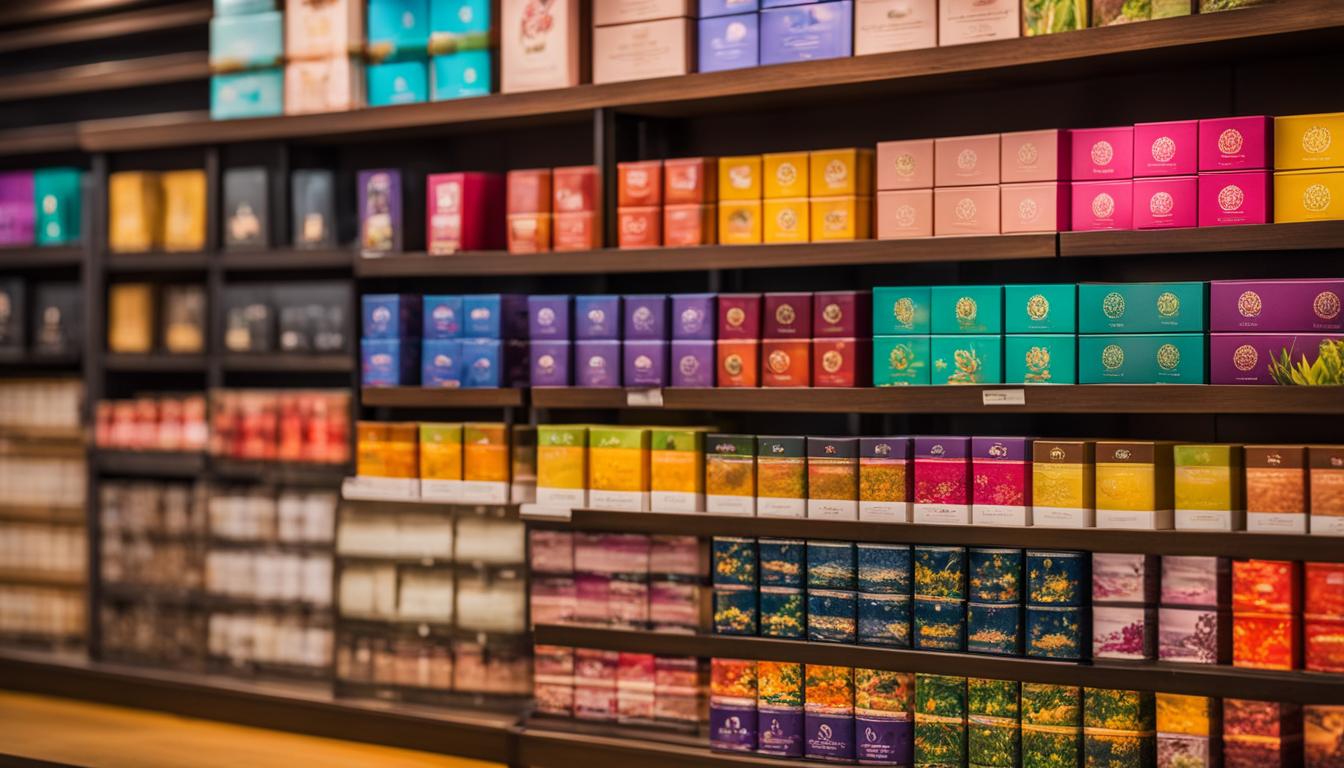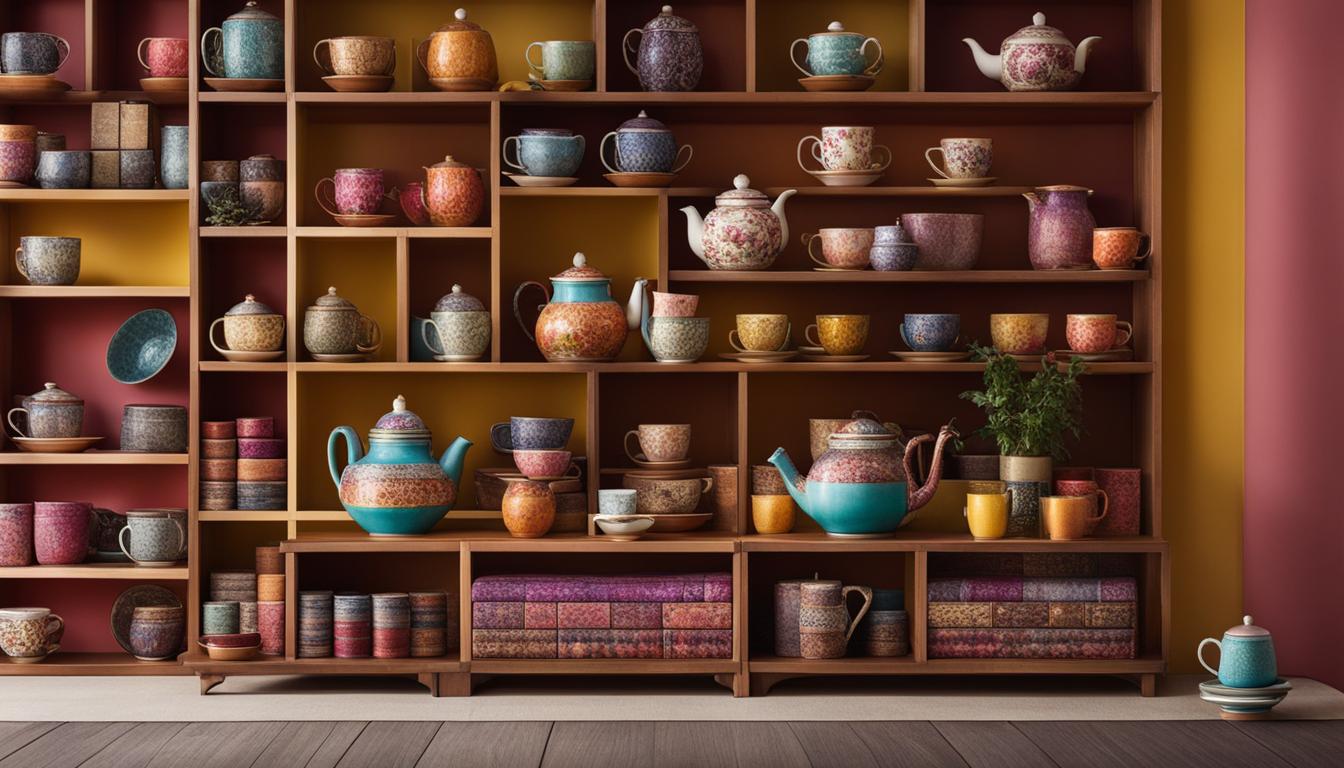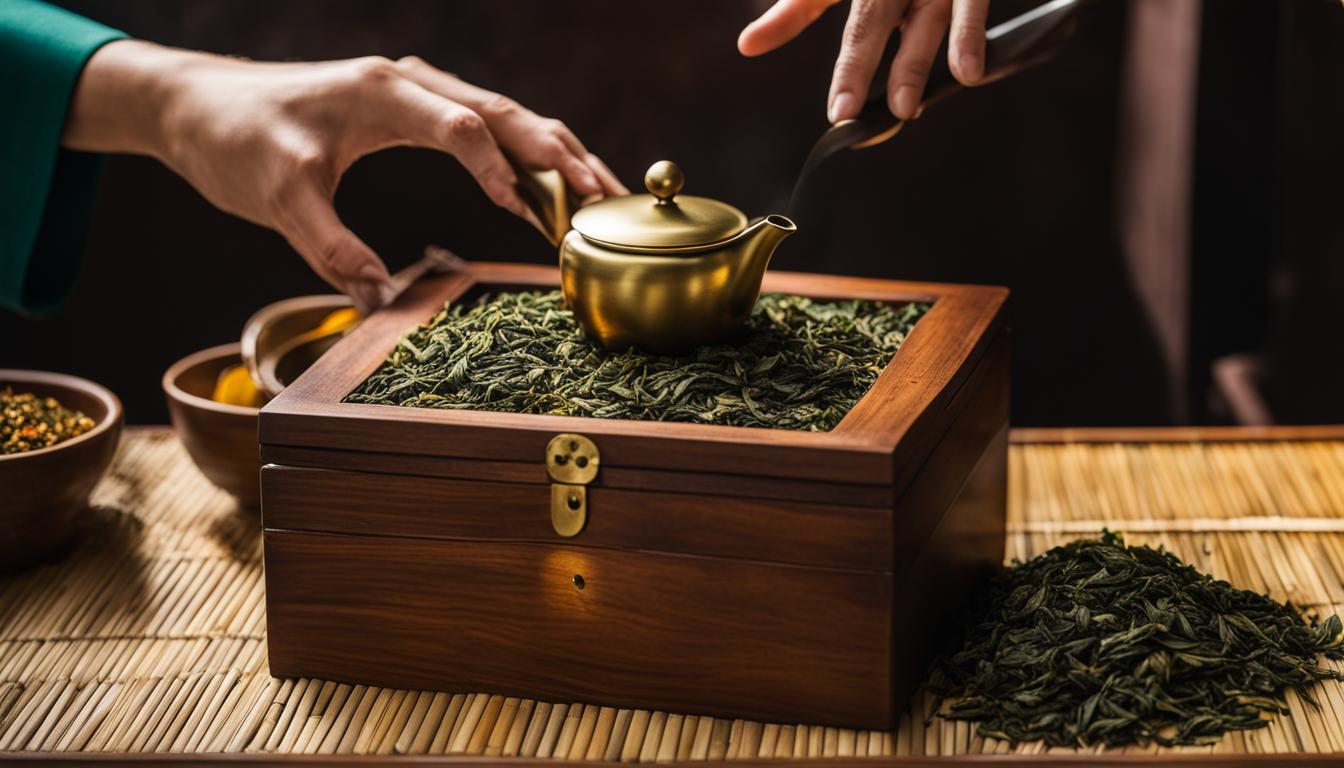Greetings, tea enthusiasts! In today’s article, we delve into the fascinating world of tea packaging and its profound influence on the freshness and quality of our beloved beverage. Join us as we uncover the secrets of tea packaging and discover how it can make a significant difference in your tea-drinking experience.
When it comes to tea, packaging is much more than mere aesthetics. It plays a vital role in preserving the delicate flavors, aromas, and health benefits that make tea so exceptional. Tea Packaging Impact is not to be underestimated!
Key Takeaways:
- Tea packaging directly affects the freshness and quality of the tea.
- Paper-based packaging falls short in moisture control, while tin containers provide excellent protection against light, moisture, and air.
- Foil packaging acts as a barrier against external elements, while vacuum-sealed packaging minimizes oxidation.
- Biodegradable packaging offers a sustainable alternative, but its impact on freshness is still being explored.
- Light-blocking, moisture control, and airtight sealing are crucial factors in preserving tea freshness.
Traditional Tea Packaging Materials
When it comes to traditional tea packaging, there are several materials that have stood the test of time. Each material offers its own set of advantages and considerations, impacting the freshness and quality of the tea. Let’s explore the most common traditional tea packaging materials:
Paper-based Packaging
Paper-based packaging has a long history in the tea industry. It is affordable, readily available, and can be easily printed with branding and labeling. However, paper-based packaging falls short in terms of moisture control. This can lead to tea leaves losing their freshness and flavor over time, as moisture from the environment can seep into the packaging.
Tin Packaging
Tin containers have been a popular choice for tea packaging due to their durability and ability to preserve tea freshness. They provide excellent protection against light, moisture, and air, keeping the tea leaves in optimal condition. Tin packaging is often favored for high-quality teas that require extra care in preserving their delicate flavors.
Foil Packaging
Foil packaging creates a barrier against external elements, such as light, moisture, and air. This helps to extend the shelf life of the tea and preserve its freshness. Foil packaging is commonly used for tea bags and loose leaf tea, ensuring that the tea retains its flavor and aroma until it reaches the consumer.
Vacuum-Sealed Packaging
Vacuum-sealed packaging is a method that minimizes oxidation by removing air from the packaging. This helps to preserve the freshness and flavor of the tea for a longer period. Vacuum-sealed packaging is particularly effective for teas that are highly sensitive to oxidation, such as green and white teas.
Biodegradable Packaging
With the growing emphasis on sustainability, biodegradable packaging has gained popularity in the tea industry. Made from compostable materials, such as plant fibers, biodegradable packaging offers an eco-friendly alternative. However, its impact on tea freshness is still being explored, and further research is needed to determine its effectiveness in preserving tea quality.
| Tea Packaging Material | Advantages | Considerations |
|---|---|---|
| Paper-based Packaging | Affordable and customizable | Lacks moisture control |
| Tin Packaging | Durable, protects against light, moisture, and air | Relatively higher cost |
| Foil Packaging | Creates a barrier against external elements | May not be as visually appealing |
| Vacuum-Sealed Packaging | Minimizes oxidation, preserves freshness | Requires specialized equipment |
| Biodegradable Packaging | Eco-friendly, compostable | Effectiveness in preserving freshness is still being explored |
Evaluating Freshness-Preserving Factors
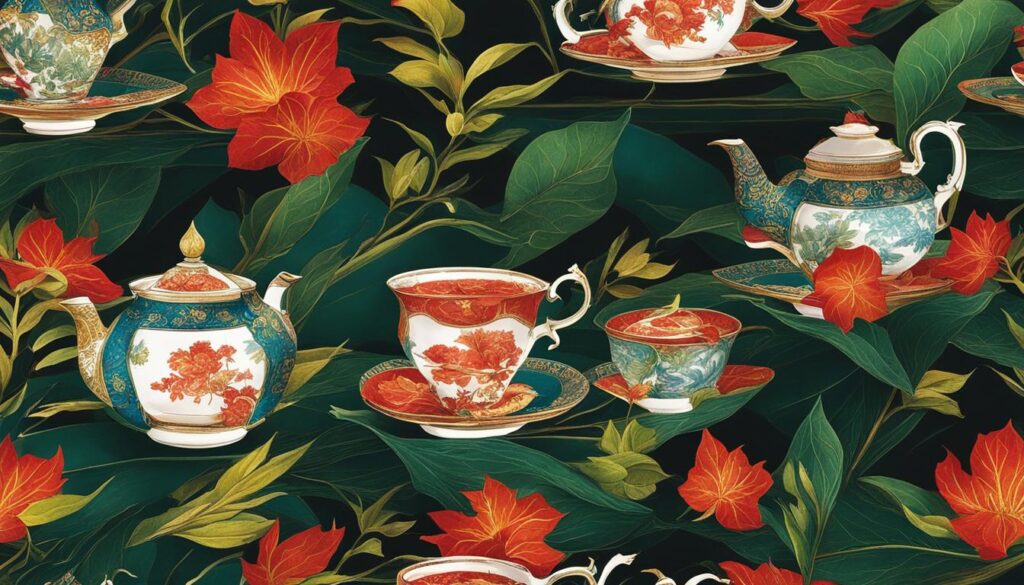
When it comes to preserving the freshness and quality of tea, certain factors play a crucial role. These factors include light exposure, moisture control, airtight sealing, active modified atmosphere packaging, and nanotechnology in packaging.
Light Exposure
Tea is sensitive to light, and prolonged exposure to ultraviolet (UV) light can accelerate the breakdown of beneficial compounds. To ensure tea freshness, packaging with UV-blocking properties is essential. These packaging solutions help shield the tea from harmful light rays, preserving its delicate flavor and aroma.
Moisture Control
Proper moisture control is another vital factor in maintaining tea freshness. Excessive moisture can compromise the flavor and lead to the growth of mold. Packaging that offers effective moisture control helps prevent these issues and ensures that the tea retains its desired taste and quality.
Airtight Sealing
Airtight sealing is crucial for preserving tea freshness by acting as a barrier against oxygen. Oxygen exposure can lead to oxidation, which can deteriorate the flavor and aroma of tea. Airtight packaging helps minimize this oxidation process, ensuring that the tea retains its optimal taste and aroma for a longer period.
Active Modified Atmosphere Packaging and Nanotechnology
Active modified atmosphere packaging (MAP) is a technique that involves adjusting the gas composition within the packaging to slow down the degradation of tea. By creating an optimal atmosphere, MAP helps preserve tea freshness and extend its shelf life.
Nanotechnology in packaging is another innovative approach to enhance freshness. Nanomaterials can provide an additional layer of protection against harmful elements, including light, moisture, and air. This technology contributes to the overall preservation of tea quality and freshness.
By considering these freshness-preserving factors, tea packaging can be optimized to ensure that the tea reaches consumers in its finest form, with its flavors and aromas intact.
Customizing Tea Packaging for Different Varieties
When it comes to preserving the freshness and quality of different tea varieties, customized packaging is essential. Each type of tea has its distinct characteristics and requirements for optimal preservation. Let’s explore the specific packaging needs for green tea, black tea, and herbal tea.
Green Tea Packaging
Green tea is delicate and susceptible to oxidation, requiring packaging that prioritizes light-blocking, airtight seals, and moisture prevention. Exposure to light can degrade the delicate compounds in green tea and compromise its flavor. Airtight seals are crucial in ensuring minimal contact with oxygen, which can accelerate oxidation. Moisture prevention helps to maintain the tea’s crisp and fresh taste. Packaging options for green tea may include foil-lined pouches or tin containers with airtight lids.
Black Tea Packaging
Black tea, known for its bold flavor, requires packaging that allows controlled airflow while maintaining moisture control. Unlike green tea, black tea is fully oxidized, so it is less sensitive to air exposure. However, proper airflow is important for black tea to maintain its aroma and taste. Packaging options for black tea may include paper-based bags with perforations or tea tins with breathable lids.
Herbal Tea Packaging
Herbal teas encompass a wide variety of blends, each with unique flavor profiles and ingredients. Packaging for herbal tea should focus on moisture control and light protection. Herbal teas often contain delicate botanicals that can lose their potency if exposed to excess moisture or light. Packaging options for herbal tea may include moisture-resistant bags or canisters made from opaque materials to block out light.
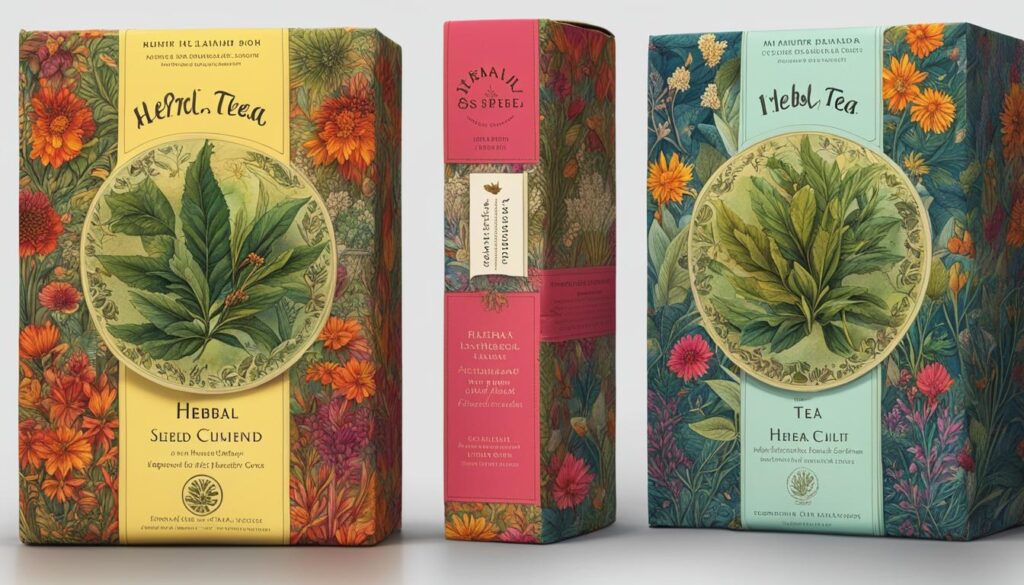
| Tea Variety | Packaging Requirements |
|---|---|
| Green Tea | Light-blocking, airtight seals, moisture prevention |
| Black Tea | Controlled airflow, moisture control |
| Herbal Tea | Moisture control, light protection |
In summary, choosing the right packaging for tea is crucial in preserving its freshness and quality. Green tea requires light-blocking, airtight seals, and moisture prevention. Black tea benefits from controlled airflow and moisture control, while herbal tea needs packaging that focuses on moisture control and light protection. By customizing packaging based on the unique requirements of each tea variety, we can ensure that tea enthusiasts can enjoy the full flavor and aroma of their favorite brews.
Conclusion
Tea packaging plays a vital role in preserving the freshness and quality of tea. The choice of packaging material, such as paper-based, tin, foil, vacuum-sealed, or biodegradable, impacts tea freshness. At TeaPack Co., we understand the importance of selecting the right packaging to ensure your tea retains its optimal flavor and benefits.
Factors like light exposure, moisture control, airtight sealing, active modified atmosphere packaging, and nanotechnology contribute to tea preservation. Our team of experts is constantly exploring innovative techniques to enhance the freshness and longevity of your tea. By utilizing UV-blocking properties, effective moisture control, and airtight seals, we safeguard your tea from degradation.
Customized packaging for different tea varieties is essential to preserve their specific characteristics. Whether you’re packaging green tea, black tea, or herbal tea, our tailored solutions address the unique needs of each variety. From light-blocking to controlled airflow, we ensure your tea maintains its distinct flavors and aromas.
The future of tea packaging is filled with exciting possibilities. We are committed to adopting sustainable materials and technologies to prioritize both the environment and the quality of your tea. From eco-friendly biodegradable packaging to advanced nanotechnology, we strive to bring you innovative solutions that uphold freshness without compromising on sustainability.
FAQ
How does tea packaging impact the quality and freshness of tea?
Tea packaging plays a crucial role in preserving the freshness and quality of tea by protecting it from light, moisture, and air, which can accelerate degradation and compromise beneficial compounds.
What are the traditional tea packaging materials?
The traditional tea packaging materials include paper-based packaging, tin containers, foil packaging, vacuum-sealed packaging, and biodegradable packaging.
How does paper-based packaging compare to other materials?
Paper-based packaging is affordable but lacks moisture control, which can compromise the freshness of the tea.
What are the benefits of using tin containers for tea packaging?
Tin containers provide excellent protection against light, moisture, and air, ensuring the tea’s freshness and quality are preserved.
Does foil packaging offer any advantages?
Yes, foil packaging creates a barrier against external elements, providing protection to the tea and extending its shelf life.
How does vacuum-sealed packaging minimize oxidation?
Vacuum-sealed packaging removes air from the container, minimizing oxidation and helping to preserve the freshness and flavor of the tea.
Is biodegradable packaging a sustainable option for tea packaging?
Biodegradable packaging offers a sustainable alternative, but its impact on tea freshness is still being explored.
What freshness-preserving factors should tea packaging prioritize?
Tea packaging should prioritize light-blocking properties, effective moisture control, and airtight sealing to prevent flavor compromise and minimize oxidation.
How does active modified atmosphere packaging contribute to tea preservation?
Active modified atmosphere packaging adjusts gas compositions to slow down tea degradation, enhancing its freshness and quality.
Can nanotechnology be used in tea packaging?
Yes, nanotechnology in packaging provides extra protection against harmful elements, further preserving the freshness of the tea.
How should different tea varieties be packaged to preserve their unique characteristics?
Green tea packaging should prioritize light-blocking, airtight seals, and moisture prevention. Black tea packaging should allow controlled airflow while maintaining moisture control. Herbal tea packaging should focus on moisture control and light protection.

